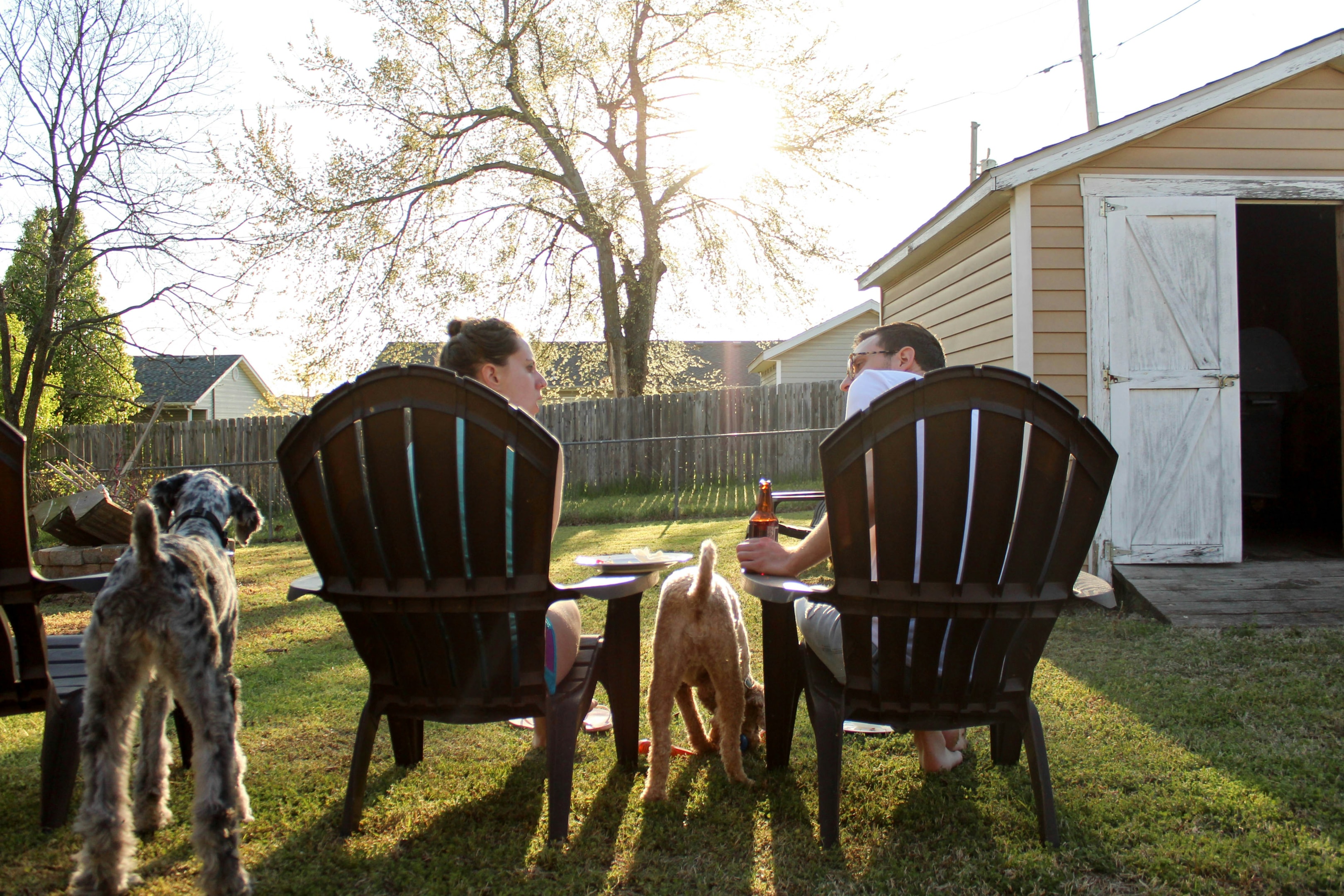Moving is stressful enough on its own, add a dog or cat to the mix, and it can get overwhelming fast. Whether you’re relocating across Edmonton or making a long-distance move, planning ahead can make all the difference for your furry companions.
In this guide, we’ll cover essential tips for moving with pets, from pre-move preparation to helping them settle into your new home. You’ll also find a helpful checklist, advice on choosing a pet-friendly moving company, and how Action Moving makes the process easier for pet owners.
Key Takeaways
- Help your pet adjust by preparing early, maintaining routines, and creating a safe, familiar travel environment.
- Choose a pet-friendly moving company that respects your animal’s needs and can offer flexible solutions.
- Use our moving with pets checklist to stay organized and reduce stress for you and your pet.

Prepare Your Pet Before Moving Day
The smoother your prep, the calmer your pet will be. Animals are creatures of habit, so any disruption in routine can lead to stress or behavioural issues. Maintaining your pet’s routine, including feeding, walking, and rest, is essential.
Introducing pets to packing supplies early can help minimize stress and prevent anxiety as the moving process begins. When preparing for a move, managing multiple boxes can be challenging, so keep pet items separate and accessible to avoid confusion and ensure your pet’s safety. Many pets may need a gradual introduction to moving activities and packing materials to help them adjust comfortably. For cat owners, provide a quiet space and familiar items to help your cat adjust to the transition and manage their stress levels.
Before moving, make sure to update your pet’s information, such as microchip details, tags, and vaccination records, to ensure their safety in case they get lost during the move.
Finally, pet proofing your new home before arrival is crucial to ensure your pet’s safety and a smooth transition.
Keep Daily Routines Consistent
Feed, walk, and play with your pet at the same times each day. Keeping a routine helps create a sense of normalcy even as boxes pile up.
Introduce Packing Gradually
Start packing room by room instead of turning your home upside down in one day. This helps pets adjust to the changes without getting overwhelmed.
Visit the Vet
Before the move, schedule a vet appointment to update vaccinations, refill any prescriptions, and get copies of medical records. Research and select a new vet in your destination area ahead of time to ensure your pet has access to essential care as soon as you arrive. Ask for advice on travel anxiety or motion sickness if your pet struggles with car rides.
Obtaining Necessary Documents for Your Move
Before you hit the road with your furry friend, make sure you have all the necessary paperwork in order. As a responsible pet owner, gathering essential documents like a health certificate, up-to-date vaccination records, and a current rabies vaccination certificate is a must. These documents not only keep your pet safe during the moving process but are often required for travel, especially if you’re crossing provincial or international borders.
Start by scheduling a visit with your current vet to discuss your move. Your vet can provide the health certificate and ensure your pet is up to date on all vaccinations. It’s also a good time to ask about any specific requirements for your new destination, such as leash laws or breed restrictions. Research pet friendly accommodations in advance, as many require proof of vaccinations and may have their own pet policies.
By preparing these documents ahead of time, you’ll ensure a stress free move for both you and your pet, and you’ll be ready to settle into your new, pet friendly home without any last-minute surprises.
Moving with Different Types of Pets
Moving isn’t just about packing boxes, it’s about making sure all family members, including your furry friends, feel safe and comfortable throughout the process. With proper planning, you can help pets of all kinds adjust to their new environment.

Dogs and Cats
For most dogs and cats, sticking to their normal routine is key. Keep feeding, exercise, and rest times consistent, and surround them with familiar items like their favourite toys and blankets. On moving day, set up a quiet room with a litter box for cats or a cozy bed for dogs to help them feel secure while the rest of the house is in motion. If you’re facing a long distance move, consider using pet relocation services to make the journey smoother for both you and your pets. Don’t forget regular potty breaks for dogs and a comfortable, familiar space for cats to retreat to, these small comforts can make a big difference.
Small Mammals, Birds, and Reptiles
Small pets like guinea pigs, birds, and reptiles need extra attention during a move. Make sure they travel in a secure, well-ventilated carrier or crate to keep them safe and prevent escapes. Before moving in, check your new home for hazards, remove pest control poison traps, secure screens on windows, and pet proof any areas where your small pets will roam. When you arrive, gradually introduce your pets to their new surroundings, starting with a safe space filled with their usual food bowls and favorite toys. This gentle approach helps reduce stress and allows your small pets to adjust at their own pace.
Special Considerations for Long Distance Moves
A long distance move with pets requires extra planning to keep the experience stress free for both you and your furry friend. Start by researching pet friendly accommodations along your route and book them early to ensure you have a safe place to rest. If you have multiple pets or are moving a long way, pet relocation services can help manage the logistics and keep your pets comfortable.
Pack a dedicated bag with your pet’s essentials, food, water, medication, and comfort items—so everything is easily accessible during the journey. Stick to your pet’s normal routine as much as possible, including regular potty breaks and mealtimes, to help them feel secure. With proper planning and a focus on your pet’s needs, you can make your long distance move a positive experience for all family members, furry or otherwise.
Travel Day: Keep It Calm and Controlled
On moving day, your energy sets the tone. Plan ahead to reduce your pet’s exposure to chaos. Make sure your pet is secure (pet secure) during the move by using a crate, kennel, or harness as needed to prevent escapes and keep them safe.
If you’re using a travel carrier, prepare your pet’s crate in advance to make it a familiar and comfortable space. Create a positive association with the carrier or crate by using treats and positive reinforcement. For car travel, use a crate or harness to keep your dog safe and prevent injury. Bring your dog’s favorite items, such as bedding or toys, to provide comfort and familiarity. These familiar items can help reduce your dog’s anxiety during travel. Consider using calming aids, maintaining routines, or consulting your veterinarian to keep your pet calm throughout the journey. Provide activities or toys to keep your pet occupied and engaged during travel.
If you are preparing for air travel, check airline policies ahead of time and ensure your pet and their carrier are ready for flying long distances.
Set Up a Safe Space
Keep your pet in a quiet room with familiar items like toys, a blanket, or their bed while movers are in the house. This minimizes stress and prevents them from slipping out the door.
Use the Right Travel Carrier
For dogs or cats, a well-ventilated, comfortable carrier is essential. Let them explore it in advance and associate it with treats or positive experiences.
Plan Pit Stops
If you’re traveling long-distance, map out pet-friendly rest stops. Ensure your pet stays hydrated and gets breaks to stretch their legs.
Settling In: Helping Your Pet Adjust to Their New Home
Even after the boxes are unpacked, your pet may need extra support. Recreating familiar surroundings in your new home can help your pet adjust more easily. Gradually introduce your pet to the new space, ensuring their safety and comfort as they explore. Establish a permanent location for your pet’s essentials, such as their bed or litter box, to provide a sense of stability. Once your pet is comfortable, move their litter box or familiar objects to a more permanent location within the home. Setting up designated pet zones can help your pet feel secure and keep your home organized. When preparing for travel, introduce your cat to their carrier in a familiar room to reduce anxiety. Be sure to check for and secure electrical cords in the new home to prevent hazards and keep your pet safe.

Unpack Their Essentials First
Before anything else, set up your pet’s space with food, water, toys, and bedding. Familiar smells and routines can help them settle faster.
Explore the New Environment Slowly
Let your pet adjust at their own pace. Start with one room, then gradually expand access as they become more comfortable.
Update Tags and Microchip Info
Make sure your contact information reflects your new address in case your pet gets lost during the transition.
Choosing a Pet-Friendly Moving Company
Not all moving companies are created equal, especially when it comes to relocating with pets.
Look for movers who understand the unique challenges of moving with animals. At Action Moving & Storage, we pride ourselves on offering personalized moving services for families with pets. Whether you’re moving across town or the province, we’ll work with you to ensure your pet’s safety and comfort every step of the way.
Moving with Pets Checklist
Here’s a quick checklist to help you stay on track:
- Schedule a pre-move vet visit
- Gather medical records and update ID tags
- Introduce packing and carriers early
- Pack a pet essentials bag (food, toys, leash, meds)
- Use sturdy boxes and packing tape for packing
- Set up a safe room on moving day
- Use a secure, comfy pet’s crate for travel
- Make rest stops on long trips
- Unpack pet items first
- Monitor behavior and offer comfort
- Update microchip and address info
FAQs About Moving with Pets
Still have questions? Our Moving FAQs cover everything from packing tips to how long moves typically take.
Q: What should I know about moving pets internationally?
A: Moving pets requires careful planning and understanding of each country’s specific regulations. It’s important to research documentation, vaccination requirements, and transportation options to ensure a smooth transition for your pets.
Q: Are there quarantine periods for pets when moving to another country?
A: Yes, some countries require pets to undergo mandatory quarantine periods upon arrival to prevent disease transmission. Make sure to check the quarantine rules of your destination and prepare accordingly to ensure compliance and your pet’s welfare.
Q: What tips are there for relocating with small dogs?
A: When relocating with small dogs, use secure travel crates or carriers designed for their size. Maintain their routine as much as possible, provide comfort items, and ensure access to food, water, and temperature control during the journey to reduce stress.
Final Thoughts
Moving with pets doesn’t have to be stressful. With the right preparation, support, and a moving company that cares, the experience can be smooth for you and all your furry family members.
If you’re planning a move with pets in Edmonton or beyond, trust Action Moving to handle the heavy lifting while you focus on keeping tails wagging and whiskers calm. If needed, consider entrusting a family member to help care for your pet during the move to ensure their comfort and well-being.
Plan Your Next Move
Want help planning your next move with pets? Get a free quote from Action Moving & Storage today.